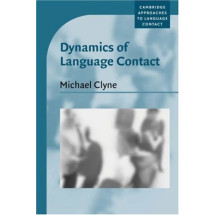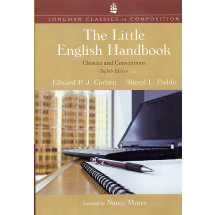Expressly created to engage the visual and technological interests of today’s students, The Brief Penguin Handbook revolutionized the way handbooks present information and ideas.
With a highly visual design, unique coverage of visual rhetoric and visual literacy, superior coverage of technology, and distinctive coverage of writing for different purposes, the first edition established itself as the best-selling handbook to enter the market in fifteen years. The second edition of this extraordinary handbook continues to lead the market with enhanced visual examples and coverage, completely revised and expanded documentation chapters, cutting edge coverage of language issues, and much more.
I. COMPOSING IN A VISUAL ERA.
Introduction: Writing for Different Purposes in Different Media.
1. The Rhetorical Situation.
a. The rhetorical triangle.
b. A writer's audience.
c. A writer's ethos.
d. A writer's purpose.
2. Words, Images, and Graphics.
a. Multimedia writing.
b. Communicating with words, images, and graphics.
c. Where images and graphics work best.
d. Where words work best.
II. PLANNING, DRAFTING, AND REVISING.
3. Planning and Drafting.
a. Establish your goals.
b. Explore your topic.
c. Write a working thesis.
d. Plan a strategy.
e. Compose a draft.
f. Write as a member of a team.
g. Stay organized.
4. Composing Paragraphs.
a. Focus your paragraphs.
b. Organize your paragraphs.
c. Make your paragraphs coherent.
d. Consider paragraph length.
e. Link across paragraphs.
f. Write effective beginning and ending paragraphs.
5. Rewriting, Editing, and Proofreading.
a. Switch from writer to reader.
b. Learn strategies for rewriting.
c. Respond to other writers� drafts.
d. Edit for particular goals.
e. Proofread carefully.
f. Learn to edit the writing of others.
III. WRITING IN COLLEGE AND BEYOND.
6. Critical Reading and Viewing.
a. Two kinds of reading and viewing.
b. Critical reading.
c. Verbal fallacies.
d. Critical viewing.
e. Visual fallacies.
7. Analyzing Verbal and Visual Texts.
a. The aim of analysis.
b. Analyze the context and the text.
c. Develop and organize a rhetorical analysis.
d. Sample rhetorical analysis.
e. Analyze images and other kinds of visual texts.
8. Writing to Reflect.
a. Find a reflective topic.
b. Identify a focus.
c. Develop a response.
d. Sample reflective essay.
e. A reflective magazine article.
9. Writing to Inform.
a. Find an informative topic.
b. Narrow your topic and write a thesis.
c. Develop and organize your ideas.
d. Sample informative essay.
e. An informative brochure.
10. Writing to Persuade.
a. Find an arguable topic.
b. Make an arguable claim.
c. Develop and organize good reasons.
d. Sample proposal argument.
e. A persuasive Web site.
f. A persuasive letter of application and r�sum�.
IV. DESIGNING AND PRESENTING.
11. Design Basics.
a. Create visual relationships.
b. Make similar items looks similar.
c. Make different items look different.
d. Understand type styles.
12. Illustrations, Tables, and Charts.
a. Illustrations.
b. Image editors.
c. Formats and printers.
d. Tables.
e. Charts and graphs.
13. Verbal and Visual Presentations.
a. Plan a presentation.
b. Design effective visuals.
c. Deliver a presentation with visuals.
14. Writing for the Web.
a. Plan a Web site.
b. Define specific goals.
c. Design for the Web.
V. RESEARCHING.
15. Planning Your Research.
a. Analyze the research task.
b. Set a schedule.
c. Find a topic that interests you.
d. Ask a question and draft a working thesis.
e. Decide what kind of research you need to do.
f. Plan your field research.
16. Finding Print Sources in Libraries.
a. Determine what kinds of sources you will need.
b. Identify keywords.
c. Find books.
d. Find journal articles.
e. Find newspaper articles.
f. Start a working bibliography.
17. Finding Sources Online.
a. Database sources versus Web sources.
b. Find articles and other sources in library databases.
c. Find information on the Web.
d. Find visual sources online.
18. Evaluating Sources.
a. Determine the relevance of sources.
b. Determine the reliability of print sources.
c. Determine the reliability of Internet sources.
d. Create an annotated bibliography.
19. Avoiding Plagiarism When Using Sources.
a. The purpose of documenting sources.
b. Intellectual property and scholastic honesty.
c. Avoid plagiarism.
d. Quote sources without plagiarizing.
e. Summarize and paraphrase sources without plagiarizing.
20. Writing the Research Project.
a. Review your goals and thesis.
b. Plan your organization.
c. Incorporate quotations, summaries, and paraphrases effectively.
d. Write your draft.
e. Review your draft.
f. Revise, edit, and check formatting.
VI. DOCUMENTING.
21. MLA Documentation.
a. In-text citations in MLA style.
b. Books in MLA-style works cited.
c. Journals and magazines.
d. Newspapers.
e. Government documents, pamphlets, dissertations, and letters.
f. Online publications.
g. CD-ROM, software, and unedited online sources.
h. Visual sources.
i. Multimedia sources.
j. Informational notes.
k. Sample research paper with MLA documentation.
22. Writing about Literature.
a. Become a critical reader of literature.
b. Develop an original argument.
c. Support your argument.
d. Sample literary analysis.
23. APA Documentation.
a. In-text citations in APA style.
b. Books and nonperiodical sources in the APA-style references list.
c. Periodical sources.
d. Online sources.
e. Visual, computer, and multimedia sources.
f. Sample paper with APA documentation.
24. CMS Documentation.
a. Books and nonperiodical sources in CMS-style citations.
b. Periodical sources.
c. Online and computer sources.
d. Multimedia sources.
e. Sample pages with CMS documentation.
25. CSE Documentation.
a. In-text citations in CSE style.
b. Books and nonperiodical sources in CSE-style references.
c. Periodical sources.
d. Online sources.
e. Sample pages with CSE documentation.
VII. EFFECTIVE STYLE AND LANGUAGE.
26. Write with Power.
a. Recognize active and passive voice.
b. Use action verbs.
c. Name your agents.
d. Vary your sentences.
e. Project personality.
27. Write Concisely.
a. Eliminate unneccessary words.
b. Reduce wordy phrases.
c. Simplify tangled sentences.
28. Write with Emphasis.
a. Manage emphasis within sentences.
b. Forge links across sentences.
c. Use parallel structure with parallel ideas.
d. Use parallel structure with lists.
e. Use parallel structure in paragraphs.
29. Find the Right Words.
a. Recognize varieties of English.
b. Be aware of levels of formality.
c. Be aware of denotation and connotation.
d. Use specific language.
e. Use effective figurative language.
30. Write to Be Inclusive.
a. Be aware of stereotypes.
b. Be inclusive about gender.
c. Be inclusive about race and ethnicity.
d. Be inclusive about other differences.
31. Write for Diverse Audiences.
a. Understand English as a global language.
b. Respect differences in language and culture.
c. Use accessible language.
VIII. UNDERSTANDING GRAMMAR.
32. Grammar Basics.
a. Sentence basics.
b. Word classes.
c. Clauses.
d. Phrases.
e. Sentence types.
33. Fragments, Run-ons, and Comma Splices.
a. Fragments.
b. Run-on sentences.
c. Comma splices.
34. Subject-Verb Agreement.
a. Agreement in the present tense.
b. Singular and plural subjects.
c. Indefinite pronouns as subjects.
d. Collective nouns as subjects.
e. Inverted word order.
f. Amounts, numbers, and pairs.
35. Verbs.
a. Basic verb forms.
b. Irregular verbs.
c. Transitive and intransitive verbs.
d. Shifts in tense.
e. Shifts in mood.
36. Pronouns.
a. Pronoun case.
b. Pronoun agreement.
c. Problems with pronouns and gender.
d. Vague reference.
37. Modifiers.
a. Choose the correct modifier.
b. Place adjectives carefully.
c. Place adverbs carefully.
d. Revise disruptive modifiers.
e. Revise dangling modifiers.
IX. UNDERSTANDING PUNCTUATION AND MECHANICS.
38. Commas.
a. Commas with introductory elements.
b. Commas with compound clauses.
c. Commas with nonrestrictive modifiers.
d. Commas with items in a series.
e. Commas with coordinate adjectives.
f. Commas with quotations.
g. Commas with dates, numbers, titles, and addresses.
h. Commas to avoid confusion.
i. Unnecessary commas.
39. Semicolons and Colons.
a. Semicolons with closely related main clauses.
b. Semicolons together with commas.
c. Colons in sentences.
d. Colons with lists.
40. Hyphens.
a. Hyphens with compound modifiers.
b. Hyphens with compound nouns.
c. Hyphens that divide words at the ends of lines.
d. Hyphens for clarity.
41. Dashes and Parentheses.
a. Dashes and parentheses versus commas.
b. Dashes and parentheses to set off information.
c. Other punctuation with parentheses.
d. Other punctuation with dashes.
42. Apostrophes.
a. Possessives.
b. Contractions and omitted letters.
c. Plurals of letters, symbols, and words referred to as words.
43. Quotation Marks.
a. Direct quotations.
b. Titles of short works.
c. Other uses of quotation marks.
d. Misuses of quotation marks.
e. Other punctuation with quotation marks.
44. Other Punctuation Marks.
a. Periods.
b. Question marks.
c. Exclamation points.
d. Brackets.
e. Ellipses.
f. Slashes.
45. Write with Accurate Spelling.
a. Know the limitations of spelling checkers.
b. Distinguish homonyms.
46. Capitalization and Italics.
a. Capital letters.
b. Italics.
47. Abbreviations, Acronyms, and Numbers.
a. Abbreviations.
b. Acronyms.
c. Numbers.
X. IF ENGLISH IS NOT YOUR FIRST LANGUAGE.
48. Writing in a Second Language.
a. Understand how languages differ.
b. Use your native language as a resource.
c. Use dictionaries.
49. Nouns and Articles.
a. Kinds of nouns.
b. Count and noncount nouns.
c. Singular and plural forms.
d. Articles.
50. Verbs.
a. Types of verbs.
b. Be verbs.
c. Modal auxiliary verbs.
d. Verbs and infinitives.
e. Verbs and -ing verbals.
f. Conditional sentences.
g. Participial adjectives.
51. English Sentence Structure.
a. Subjects.
b. English word order.
c. Placement of modifiers.
Writing Essay Examinations.
Glossary of Grammar and Usage.
Index.
Revision Guide.
Writing Across the Curriculum Guide












